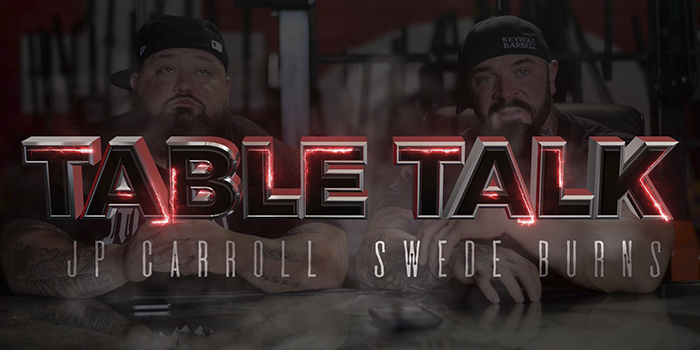
It's easy to find recommendations for how you should set up secondary work in a powerlifting training program. There's a lot of advice floating around about what types of accessory or supplemental movements you should do after your main squat, bench, or deadlift work, and how many sets and reps you should do. But there's one piece of the puzzle that's often left out: sequencing. What should change over time as you get closer to a meet? This is the topic of today's special edition Table Talk with JP Carroll and Swede Burns.
They begin by responding to a question about the relationship between main lift percentages and assistance work percentages:
"Would it be wise to follow the same percentage for a given workout for both the main lift and the assistance work? Or should the assistance work be planned differently?"
Swede answers these questions by going into detail not only about the percentages of main lifts and assistance work, but also about the entire process of altering assistance during a training cycle. He calls this "sequencing assistance work" and gives a rough outline of how he suggest setting it up. There is a time that your mechanically similar movements and your secondary stuff should be in the same percentage range as your main work, but not always. As you get closer to a meet and are doing training that is more meet-specific, the secondary work should be similar, but further away from a meet it should not.
For example, consider a six-month macrocycle. In the first mesocycle Swede will have lifters start with movements and set and rep schemes that have lower training potential and are less specific to the sport of powerlifting, such as high rep work (like sets of 10 on rack pulls or sets of 15 on a high board press). As the lifter nears the meet, changes to do more powerlifting-specific work will be made, such as lowering the boards but keeping the reps high. Then the reps drop and the percentages of the secondary work matches the main work. Finally, during the peaking cycle, accommodating resistance can be added.
So, after all this, what is the answer to the initial question? It depends. Like all things in training, there is no clear answer. For novice lifters, and Swede reminds that most of you are novice lifters, you can get stronger during almost any part of this process; training doesn't need to be highly-specific or incredibly complex for novice lifters to improve.










